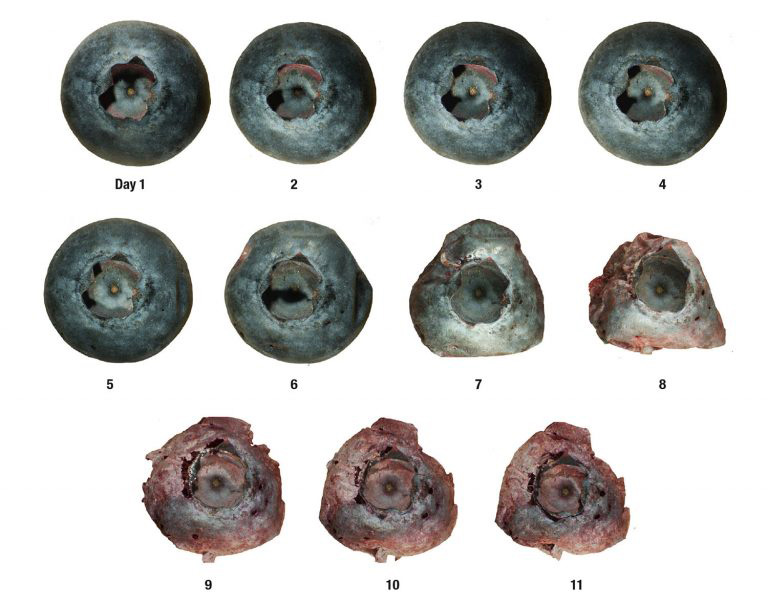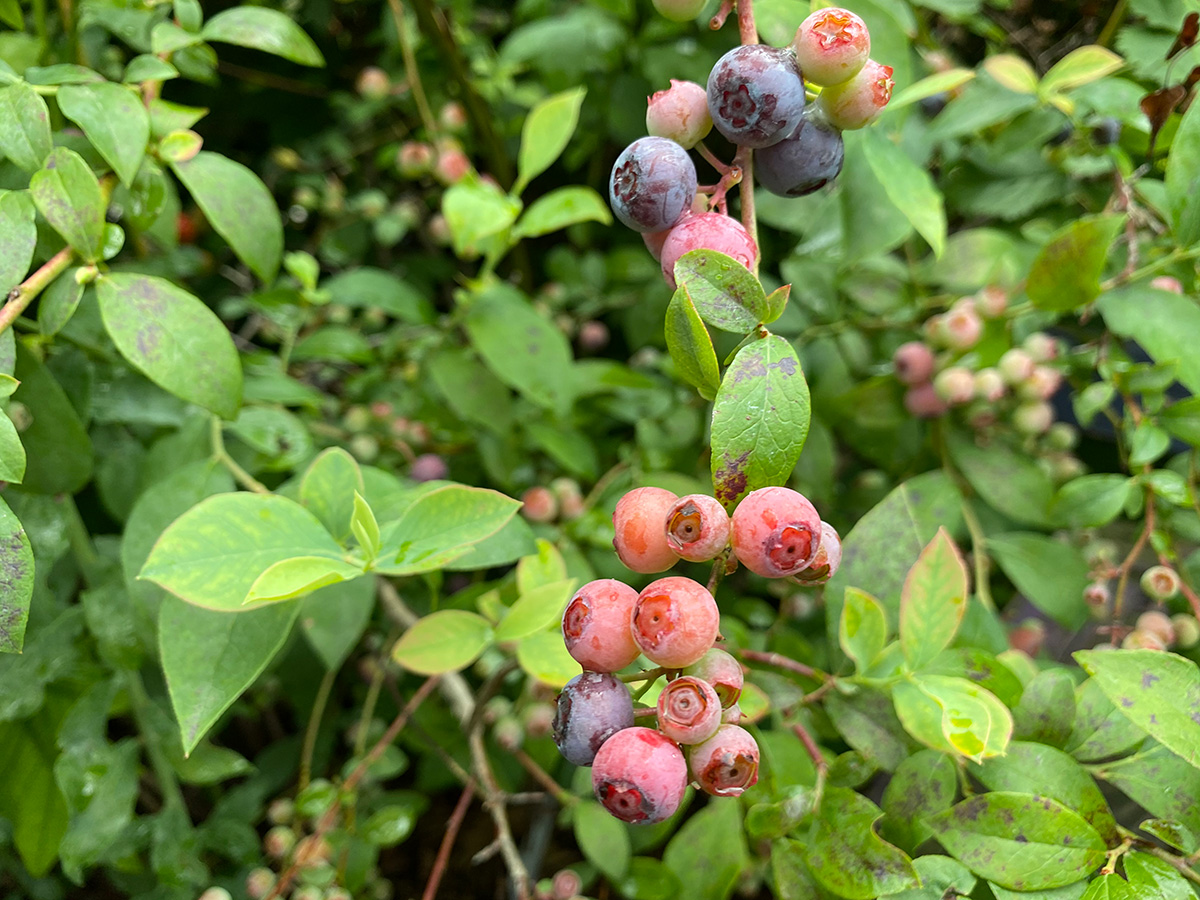Growing Blueberries in the South
Choose the right variety for your climate to yield sweet, tart berries and beautiful fall foliage

There are two times of year I truly love the blueberry bushes in my backyard. The first, of course, is during harvest. Piling mounds of the little beauties into buckets or eating them directly from the bush is a high point of summer. The second moment of joy is during late fall when all the leaves have departed from the trees and my blueberry bushes hang onto their fiery red fall color longer than almost anything in my garden. Blueberries bring a unique combination of a beloved fruit plus remarkable ornamental beauty. Though underused in the landscape, they are fairly easy to grow and are historically known as plants seldom bothered by pests.

Choosing a shrub
When choosing a blueberry shrub, make sure to choose one suited to our Southern climate. Recommendations vary depending on specific locations and growing conditions. Many different hybrids exist, which can add confusion. Varieties of blueberries are distinguished by their suitability to specific climates and their ripening season. Many blueberry varieties are best paired with another similar variety to maximize fruit set. While it is possible to have only one blueberry plant and get fruit (look for varieties that are promoted as being highly self-fertile), you will not get as much. Before buying one or several blueberry bushes, do your research, and talk to other gardeners or someone from your county extension office. Look for different varieties that bloom at the same time for cross-pollination.

King of Southern blueberries
Rabbiteye blueberry (Zones 6b–9) is a popular native blueberry of the Southeast that is vigorous and grows well in our region. It is known to produce well in mild climates and have satisfactory yields. Berries range in color from glossy black to light blue, come in various sizes, and have thick skins. In general, rabbiteye blueberry plants are relatively deep rooted and can absorb moisture and nutrients at a deep level, making them quite drought tolerant.
Establishing new bushes
Blueberries are acid-loving plants adapted to living in low-fertility habitats, and they love sandy loam soils. Good drainage and a pH of 4.8 to 5.3 are ideal. Rabbiteye is a good choice for the South because it tends to have more tolerance of less-than-ideal conditions. If your soil conditions are nowhere near what blueberries prefer, consider growing them in large raised beds. Surface mulches are highly recommended for blueberries. When adding new blueberries, it is important to give your plants time to establish. This is aided by removing all—yes, ALL—the blooms for the first two springs in a row. You will harvest more fruit over a five-year period when you make this early sacrifice. So be patient now and enjoy more fruit later.

Pest patrol
Blueberries have been historically pest resistant. They are often rated as the fruit you can grow with the least amount of inputs such as chemical sprays. However, the spotted wing drosophila (SWD) is an invasive pest of small fruits that has become established in the South. The fly lays eggs in fruits, and the resulting maggot infestation causes premature fruit drop that renders the crop unsuitable for human consumption. Unfortunately, flies and their damage are not noticed until fruit is being harvested. If this pest becomes an issue, consider harvesting early, and improve your overall crop sanitation by eliminating any infested fruit or fruit that has fallen on the ground.
Chilling hours are critical in the South
For any blueberry variety you are considering for your home landscape, you need to take chilling hours into consideration. A chilling requirement is the minimum period of cold weather after which your blueberries will blossom. If you pick a chilling requirement that is far too high in the South, you may not get enough cold to initiate fruiting. If you choose a variety with too low of a chilling requirement, plants may bloom far too early and be susceptible to cold damage. So proceed with caution. If you are in the deeper South (such as South Georgia or lower Mississippi), plants with a chilling requirement of around 300 hours or maybe lower will be OK. However, as you move north into places such as Tennessee, you will need to find plants that require between 600 and 700 chilling hours.

Growing blueberries can be addictive
Once you get the bug for growing blueberries and start to see success, you will be smitten with this easy-to-grow fruit. I suggest you start with three bushes if you are just getting started. Pick two different cultivars that bloom at complementary times. Soon you will be an expert and passing on the knowledge of your successes and failures to others.
—Andy Pulte is a faculty member in the plant sciences department at the University of Tennessee.
Fine Gardening Recommended Products

Berry & Bird Rabbiting Spade, Trenching Shovel
Fine Gardening receives a commission for items purchased through links on this site, including Amazon Associates and other affiliate advertising programs.

Gardener's Log Book from NYBG
Fine Gardening receives a commission for items purchased through links on this site, including Amazon Associates and other affiliate advertising programs.

ARS Telescoping Long Reach Pruner
Fine Gardening receives a commission for items purchased through links on this site, including Amazon Associates and other affiliate advertising programs.







Comments
Log in or create an account to post a comment.
Sign up Log in